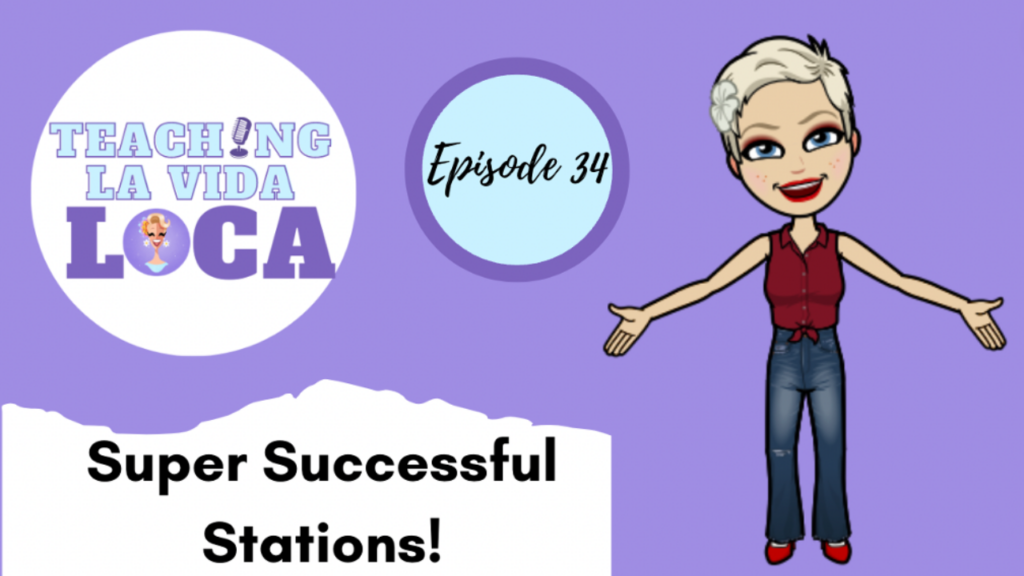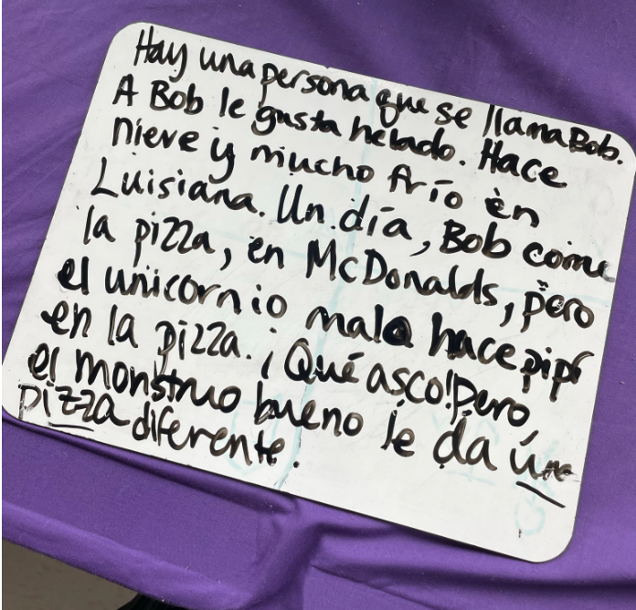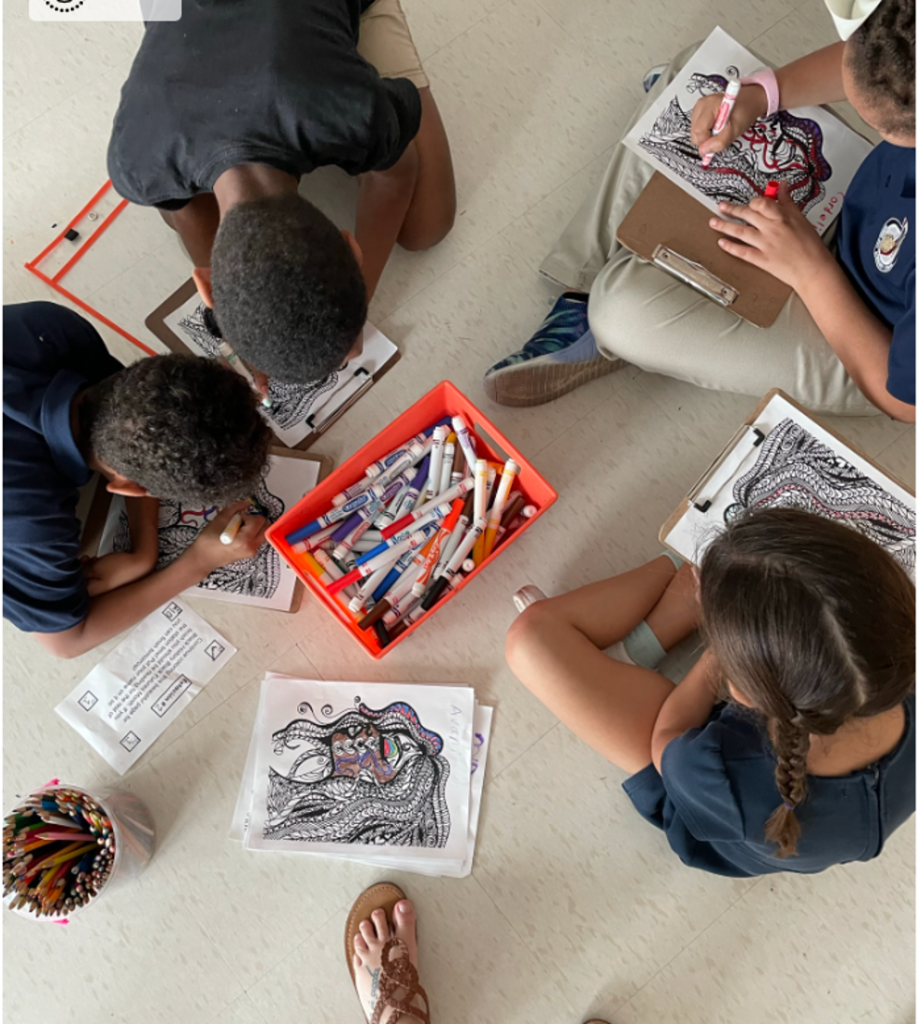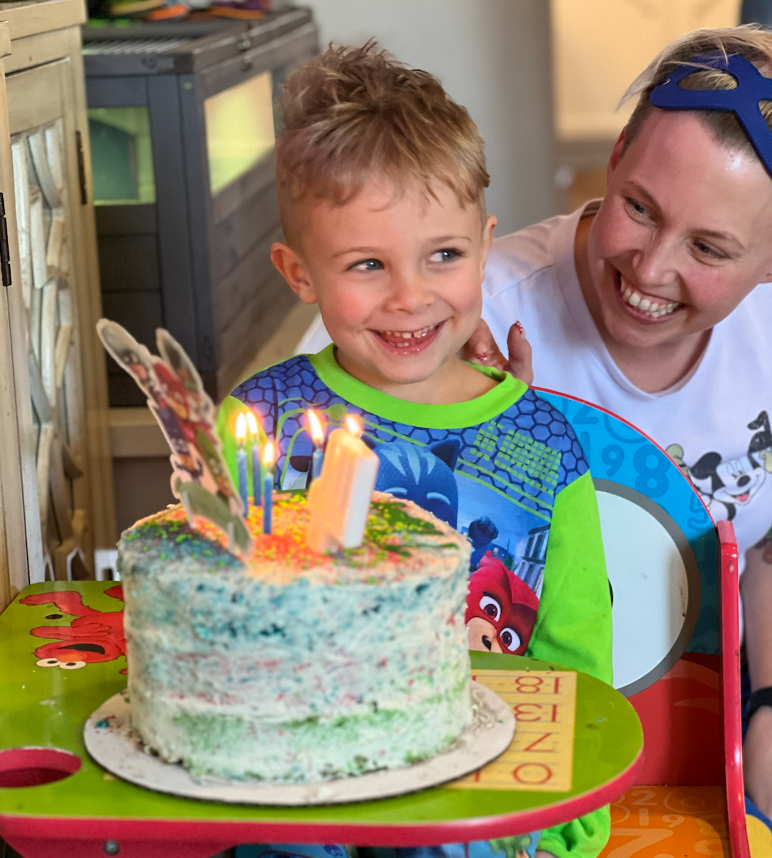Making Stations Sustainable!
Why is February so challenging? It is such a short month, and it feels like it drags on forever!
Last week I really needed a shift. I needed a shift in the energy of my classes, and I needed a few days to not feel like I had to be so “on” all the time. I also decided we needed some “novelty” again and wanted to change up the class jobs again, so I decided to attempt stations with my elementary students. (My classes are SHORT, about 35 minutes not including transitions, so I did 6 stations every day and they were 5 minutes long each!)
About 4 years ago, I blogged about stations because I was VERY nervous to attempt them with my large (33-35 student) middle school classes. You can read that blog (and watch the many videos included here. I was equally nervous to attempt them with my third and fourth graders this year, but there were a few things I did that led to WILD success and made them super sustainable for the whole week!
I talk about the many ways I made stations successful in my most recent podcast, episode 34 of Teaching La Vida Loca. You can listen in on Spotify, Apple Podcasts, Google Podcasts, or on my site directly!

I REALLY wanted to be less “on”, and since I knew I wanted students to apply for new class jobs AND have one-on-one check in time with me, I knew I wouldn’t have time to be rotating and floating around from station to station to ensure students knew what they needed to do.
One of the biggest game changers I shared in this podcast episode was my “Station Expectation worksheet”! You can download it for free by clicking here.
Students knew exactly what to do at each station, they knew the voice level expectation, and they knew whether it was individual, paired, or group work and ALL of it was read out loud by the station captain! I felt like a genius… truly! If you want to try this in your class, click here to listen to the podcast and learn more, or click here to get your force copy of the expectation sheet!
So, let’s talk about how I gave my stations “themes” to make them more sustainable!
By creating themes for each station, it allowed me to run stations all week long, and students came prepared each day knowing that even though the activities were changing every day, the station idea, or topic stayed the same.
This also allowed me the freedom and flexibility to only get crazy with two stations each day, and the rest could be fairly low/no prep!
The following is a detailed list of each station theme and what happened at that station each day:
Maestra’s Station
- Day one – students applied for new class jobs
- Day two – they self-assessed their interpersonal and interpretive communication on a rubric while I checked in with students 1:1 about their new job assignments
- Day three – clarified job assignments and expectations and went over self-assessment rubrics (calibrated – did this in the moment, didn’t prep in advance)
- Day four – Group “writing planning”- I have a scaffold that I use to teach them to plan and think in Spanish and then a group “free-write” in preparation for individual free write task
- Below is an example of their “group free-write”
- Day five – individual, free-write assessment

Señor Wooly
- Day one – kiddos completed a worksheet from one of their fave songs (printed from a site so very low prep)
- Day two – students used a word cloud in a clear plastic sleeve (only had to make 4 copies and provide dry erase markers) to circle all the words they knew and could define in one color and the words they thought they could guess based on context clues in another. Then they shared out with each other and learned from each other!
- Day three – students signed into their Wooly accounts with the chromebooks at that station (headphones were already plugged in) and completed as many nuggets as possible in the allotted time.
- Day four – Students drew images from their favorite Wooly songs to demonstrate comprehension in a storyboard.
- (this station didn’t exist on the assessment day)
FVR
What this!? Listen to this podcast to learn about the in’s and outs of FVR!
- Day one – Free voluntary reading!
- Day two – Free voluntary reading!
- Day three – Free voluntary reading!
- Day four – Free voluntary reading!
- Day five – Reading comprehension assessment station
OWI – One Word Image
- Day one – Students read the description of the character we created together as a class (I legit just printed out the write and discuss from the previous week real quick), then they drew our class character. They loved this because usually it is just the class artist who gets to! (had to make sure to print each class’ story and switch it out between classes)
- Day two – Students read through various stories from previous one word images I’d made with classes over the years, and I also grabbed the stories my colleague recently made with her Kindergarteners and 1st graders. They did this as a group.
- Day three – I gave students the opportunity to work with their station group to answer various questions about the OWI character as if they were creating a story about it. Questions were written in the target language. Examples here in English: “Where do they live?” “What’s their favorite food?” “What kind of pet do they have?” “What is their favorite restaurant?” “What is their greatest fear?” “What is their greatest secret?”
- Day four – They read two other class’s OWI descriptions and voted for their favorite on a sticky note. YAY for more input and NO more prep! (I just used the same print outs that I created on day 1)
- Day five – this station didn’t exist on assessment day
Gratitude/Brain Break
- Day one: I left construction paper, markers, crayons, scissors and glue sticks and gave students free reign to write a note or card of gratitude to anyone in their life. I left sentence stems and an example at the station in case they wanted some inspiration! 80% of my students walked away with something they could hand to someone important in their life later that day. The other 20% had fun doodling and cutting paper and had a much needed Brain Break anyways!
- Day two: Collaborative coloring. I used a really detailed coloring page (like the adult ones you find and each class worked to color it together better than the last class. Since my station groupings were 4 students at the most, it worked well) I wrote a blog on coloring as a brain break a few years ago. You can read it here.
- Day three: Students found a half sheet of paper at this station which had a squiggly line doodle in the middle of it. They had to turn the doodle into a drawing and then write a one sentence gratitude to someone (with the idea that they’d give this to them later that day or that week). THIS WORKED so well, and they were SOOO creative!!! I sent the two half sheets I used out to my email list so if you’re signed up for my emails go check! If you’re not, why aren’t you!? Click here to subscribe for inspiration and freebies sent straight to your inbox!
- Day four: students continued/finished their coloring sheet that they started on day three of stations at the Black History Black Futures Station. You can find the coloring sheet I used here. I am obsessed, and so were the kids.
- This station didn’t exist on assessment day

Black History Black Futures (BHBF)
- Day one – students read questions that I plan on using to interview Black Staff, Black Educators, and Black Students in my building for BHBF month and after reading they used sticky notes to write additional questions they thought it would be fun/inspirational to add! If you want to get free resources, question guides, and rubrics for students to conduct these interviews themselves (my middle schoolers did last year) you can click here!!
- Day two – students watched a video compilation (similar to this one) of my middle schoolers conducting these interviews for BHBF month last year. They loved it and it made them even more excited to see who in our school community would be interviewed and how they’d answer the questions! (the interviews are done in simple Spanish with lots of cognates. Kids LOVE seeing people in the school community taking risks and speaking in Spanish!)
- Day three – Students started this coloring page I bought a few years ago on TPT from Diversigraphics
- Day four – Students read a short story with lots of visual supports and emojis about Amanda Gorman.
- Day five – students did a Gimkit or Blooket (I pasted both links in Google Classroom) based on the Amanda Gorman reading they did the day before. (I left the reading at the station)
More tips for making Stations run SMOOTHLY
- Again, you really should go listen to my podcast because I provide concrete ideas for setting up stations and preparing students for how they’ll work
- Any of your stations where station groups will be reading the same thing over and over: Save yourself time so you don’t need so many copies and save the trees! Make 2-3 copies total and slide them into pocket folder thingies like this!
- Use this station expectation cheat sheet, and pick your station captain in advance so you don’t have to answer questions!
- Computer stations? – If it is going to take kids 5 minutes to log into their personal computer, work smarter not harder. Have enough computers at the station that needs them, already open and logged in with headphones plugged in. Have a PDF open where they can click on links to gain quick access to whatever it is they’re doing.
- Timers – Have two/three different sounds. My students heard one sound when we were 30 seconds from switching stations, and another when they moved to the next, and yet another to signal them that the station captain should be reading the next station’s expectation sheet out loud (basically meaning everyone should dig in and get started at their new station!)
- Again, four of the five days I had 6 stations and kids rotated to each for 5 minutes. This ensured they had enough work to fill all the time, a few more minutes for each would’ve been ideal but it still worked really well!
- Station placement – Have the stations that are quietest grouped closer together than the stations where you want to see more paired or group work.
Writing this all out took WAY more time than I thought it would and it sounds like a LOT of work but I hope that you notice that each day, I was only having to put real “effort” on prep into one or two stations. The rest were low prep stations so I felt like I had the time to invest in making that one or two really great! The best part was sitting back and watch the kids work successfully in groups, pairs, and independently, while I got one-on-one time each and every day with all of them!
I am so grateful for you! I hope this helps you try stations or reminds you of how great they can be! They were exactly what I needed to push me to Mardi Gras break! If you’re on break, Mardi Gras or Mid-winter, ENJOY! If you’re not, countdown the days til you’re next break and hang in there!
Thinking of you and so grateful to be part of your teaching journey! Thanks for supporting me!
Happy Teaching!
Love,
La Maestra Loca

